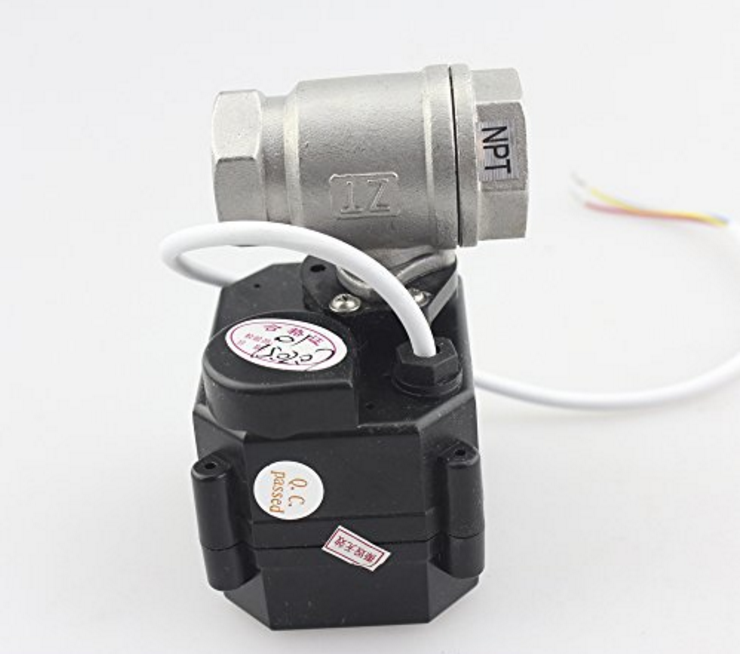If, as I suspect, the air leaks are from the solenoid valves; then the only recourse is to replace them with valves that don't leak. Simple enough to deduce. Expensive to effect.
There was a time when you would go looking for a product in your distributor-of-choice's catalog; find a half dozen things that were vaguely right; and consult with them over which was the part for your task. I once called up engineers at a company about one single IC, priced in the just-under-$100 range, and easily got them to ship me a sample - after they spent some 20 minutes explaining all the ways in which it would and would not work out well for what I was attempting. With no misdirection on my part: "I'm trying to build a one-off thing for such-and-so, with no commercial value ever, and I wonder if your gizmo will work for that." "Probably! What's your address? We'll ship you one UPS overnight."
If such a thing is still possible today, I'm afraid it's not at the scale that I'm building. The information that's available about what's out there is sparse, and distributed. If you can find the right seller for the kind of general thing you're looking for, you might be able to peruse a wide selection of gizmos. I guess it's probably still possible to talk with such resellers about which thing might be best within certain tolerances. I suppose I just don't have that context.
But there is a new phenomenon. Go find a part; find other similar-looking parts; and then you can find the common supplier in China.
These guys are, in my limited experience, *always* willing to talk to you about their product. And how they can sell you six billion of them. Minimum. For cheap. So all you have to do is drum up another 4 billion people that also want the thing; place the ridiculously large order; watch and hope while it clears customs; and then spend half your life repackaging them one at a time and mailing them to all the people that ponied up money to make it possible.
But I digress.
My thinking in this case went like so: "I need a valve that won't leak; that can be opened easily from a motor; that is not going to react badly to photographic fixer. I know, from plumbing, of ball valves that have the right properties but are made of copper. I wonder if I can find one that's made of stainless steel?"
Answer: yes.
This thing is a 1/2" NPT-threaded ball valve with a 12v DC motor attached. The motor has three leads: a common, an open, and a close. It's available under lots of names, from lots of resellers. Here are a couple of them over at amazon:
https://www.amazon.com/dp/B00VPRR42Y?psc=1
https://www.amazon.com/dp/B00OUTP6D8?psc=1
... which looks an awful lot like this:
Hmmmmmmm. If I only needed a billion of them, I might start tracking that down.
Fortunately, I only need four. I figure the solenoids for the pumps are probably sufficient (I'm not convinced I wouldn't leak air through the pumps themselves, so why make the valves leak-proof?) which means covering the waste line and the three supply tanks.
A couple orders from three different suppliers on Amazon - since every one of them seemed to only have one in stock when I bought mine - and I wound up with four identical-to-the-color-of-the-wires ball valves. Nice.
Since I built this around a relay board that has 3-position relay contacts (common, normally open, and normally closed) it's trivial to wire these guys in. Once I figure out the wiring. Yellow (which may very well be yellow-green for all I can tell) is common. Red opens the valve. Blue closes it. It takes about 3 seconds to fully actuate.
Which means I have to rewrite the program, injecting a new "waiting" kind of state while the valves are in the process of opening or closing.
I used this as an opportunity to refactor the code quite a bit, cleaning up some of the messiness from the original prototype. I also had to refactor the hardware a little, making the upper platform about two inches higher off of the base so that these monstrously large valves fit. (I did look for smaller valves, but didn't find anything that looked good enough that was under 1/2".)
And the verdict?
Yes, they do exactly what I expected. They're just $33 each.
With the original solenoid valves it took between 60 and 75 seconds to pump from the supply tanks to the developing tank; and a fairly uniform 55 seconds to pump back the other way. I had guessed that the reason for the dichotomy was increased air leaks on the supply tank side (through each of the four valves). And with those four replaced, it now takes a very stable 45 seconds to pump 1 liter in to, or back from, the developing tank.
I'm not sure I'm satisfied just yet, though. The pumps cut in and out a lot during the flow, presumably because they're getting up to their 75 PSI limit on the output side while pumping. Which probably means that the old solenoids are just too narrow to support the flow rate that the pumps can generate.
Maybe I did need a billion of these after all.
 Jorj Bauer
Jorj Bauer
Discussions
Become a Hackaday.io Member
Create an account to leave a comment. Already have an account? Log In.